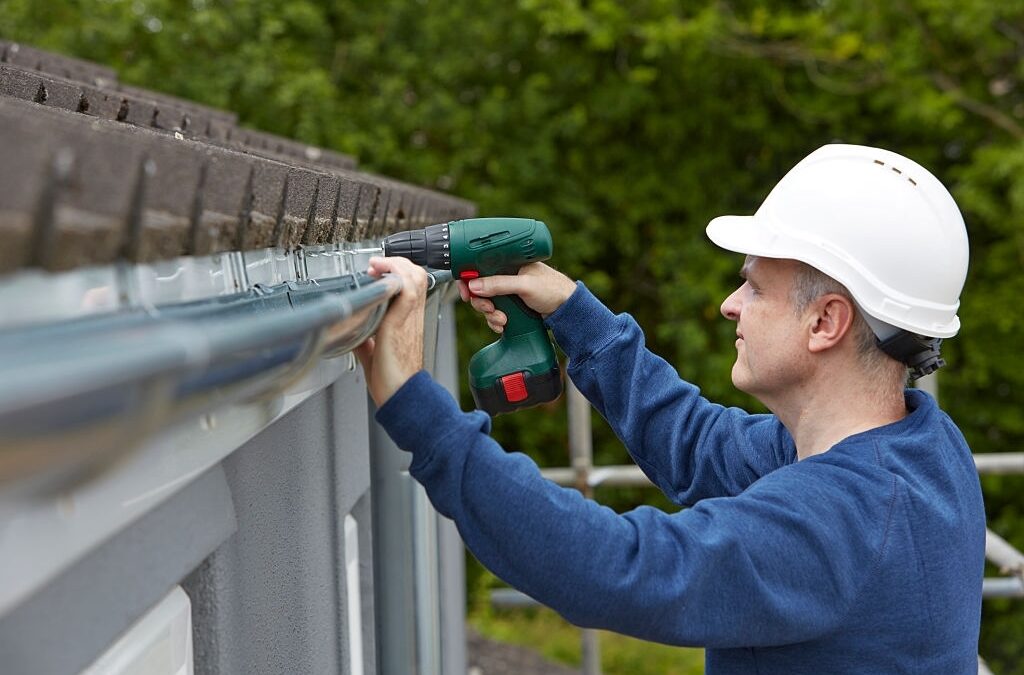If your gutter has collapsed and you are now experiencing leaks, rainwater falling on your roof, or even on your carpeting and furniture, then your gutter repair is necessary. Gutters collect leaves, branches, twigs, dust, snow, bird droppings, and a lot more debris than constantly flowing into your gutters. They act as filtration systems for your property, but they’re also prone to problems. Below, we’ll show you some simple gutter repair tips that will help keep you from having to make another gutter repair job.
The first thing that you must be checking, should your gutters have visible debris on them. If you could see visible debris from above, chances are your gutters are full of leaves and debris. Loose debris in the gutter often leads to gutter blockages.
The next thing that you need to check is the water dripping from your roof. If you see a constant stream of water dripping from your roof, this could be caused by broken gutters. It’s usually not a problem unless the water is dripping inside the gutter.
The next thing that you need to look at, is the joints between your gutters and the gutter cover. If these are starting to crack, it could be caused by the water dripping from the sides. These cracks oftentimes lead to bigger problems. If these are getting worse by the day, it’s time to get your gutter repaired.
When your gutters stop working properly, the result can be catastrophic. This happens often enough that it’s better to have your gutter repair done before you experience any type of structural damage. Cracked gutters, missing pieces, missing shingles – any kind of damage caused by the rain can lead to more work later on. Gutters will eventually wear out, but if you don’t act on the damage immediately, you could end up paying for it later.
There are a number of simple gutter repairs that you can perform yourself, without having to hire a professional. If the damage is minor, such as a broken strap, you can easily mend it on your own. There are a few different ways you can mend your own gutters. You’ll probably want to start with one of the following methods if the damage is on only one side of your gutter system.
If the water dripping from your roof isn’t reaching the downspouts, you may need to add a gutter guard to them. These are simple pieces of netting or screen that you install at the bottom of the downspout and at the top of the gutter. The purpose is to keep the water dripping from the gutter into the ground instead of running into the sides and around the sides of your home. You can buy both ready-made guards or you can cut your own. A lot of hardware stores sell gutter guards, as well as brackets and other parts.
If the water damage is extensive, such as large chunks falling down, you may want to consider replacing the gutters altogether. This is usually much more expensive to repair, but it can also be a very labor-intensive process since it involves removing the old gutter and putting in new ones. When considering this option, you need to first calculate how much square footage your new gutter system will cover. Also, because they are typically made of metal, be sure to add an extra foot or two around the base of them to prevent clogging.
If these methods fail, your next step is to seek out a professional gutter replacement. While most people can handle installing them themselves, if you’re not a trained mechanic then the best choice is to hire a professional. You can either find a company in your area or take the project to a local shop. Be sure to thoroughly research the company you choose to make sure you are getting quality material and service. If you are replacing the gutters yourself, remember to test them out before you seal the job up!
There are a few other simple gutter maintenance tasks you can perform yourself. For example, remember to check on the weather at least twice a day, especially when it starts raining. Also, be sure to always lift your gutters off of your eaves and away from your roof, as high winds can easily damage your gutters.
If you’re still unsure about what you should do for loose, decaying, or damaged materials, call a contractor. Homeowners’ insurance does not cover damages caused by gutters, so paying out of pocket for repairs can be risky. Plus, many times a damaged part can be replaced without any additional cost. Taking some proactive steps to prevent future gutter damage will help you save money in the long run.


Recent Comments